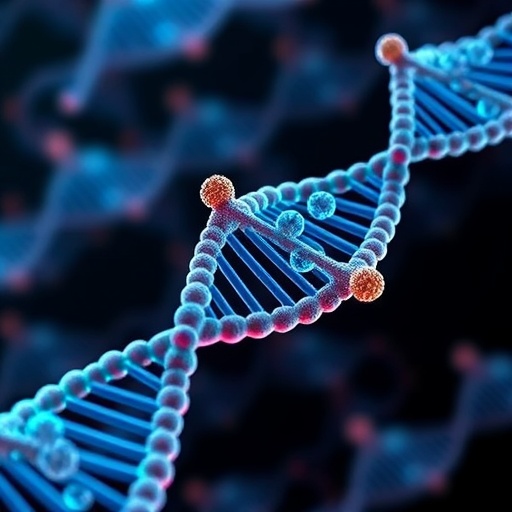Messenger RNA (mRNA) technology has revolutionized vaccine development over recent years, prominently evidenced by the rapid rollout of COVID-19 vaccines. However, translating this powerful technology into effective cancer therapy has faced notable obstacles, particularly in ensuring precise delivery to tumours and minimizing toxicity to healthy tissues. Researchers at the University of Toronto and the Princess Margaret Cancer Centre have now announced a breakthrough in this challenge: a novel, tumour-specific mRNA nanomedicine platform that promises enhanced targeting, safety, and efficacy for cancer immunotherapy.
This innovative platform, termed TITUR, creatively integrates two major molecular engineering strategies. The first element employs tumour-customized ionizable lipids (TIs), designed to form lipid nanoparticles capable of selectively delivering mRNA cargo directly into cancer cells. This specificity is critical, as conventional lipid nanoparticles used in vaccine contexts often result in significant off-target distribution, potentially harming non-cancerous tissues. By tailoring the lipid components to the unique environment of different tumour types, TITUR ensures that the therapeutic mRNA primarily accumulates in malignant cells, substantially reducing collateral damage.
Complementing this targeting mechanism, the second core component of TITUR involves tumour-specific untranslated regions (TURs) embedded within the mRNA construct. These TURs function as regulatory sequences that restrict translation — the process of converting mRNA into protein — to tumour cells exclusively. This fine-tuned control is vital because the therapeutic protein encoded by the mRNA, 4HB, is a potent inducer of immunogenic cell death (ICD). While ICD promotes cancer cell death and stimulates a robust immune response, uncontrolled 4HB expression in healthy cells could generate toxic side effects. The TURs thus act as a molecular “off switch” outside the targeted tumour microenvironment.
This dual precision engineering marks a significant advance in mRNA cancer therapeutics by greatly enhancing the safety profile of using 4HB protein as a treatment agent. The induction of immunogenic cell death by 4HB is a particularly desirable therapeutic approach because it not only directly kills tumour cells but also “primes” the immune system to recognize and attack residual cancer cells, potentially preventing recurrence and metastasis. The TITUR platform’s ability to confine 4HB expression strictly to tumour sites maximizes this benefit while limiting systemic toxicity.
Preclinical experimental models of melanoma and triple-negative breast cancer demonstrated the platform’s efficacy and safety in vivo. These animal studies revealed that TITUR-enabled mRNA delivery led to strong tumour suppression coupled with a pronounced activation of the immune system. Remarkably, tumours that were previously immunologically “cold” — meaning they were unresponsive or resistant to immunotherapy — were transformed into “hot” tumours, marked by elevated immune cell infiltration and activation. This shift greatly enhances responsiveness to immunotherapeutic interventions, representing a promising avenue to overcome the resistance hurdles that often stymie cancer treatment.
The versatility of TITUR’s design also allows for rapid customization according to the tumour type and therapeutic needs. By integrating genomic or molecular profiling data from individual patients, researchers envision further personalizing the platform to maximize clinical outcomes on a patient-by-patient basis. Such a degree of personalization could revolutionize cancer care by tailoring immunotherapies to the unique genetic and microenvironmental context of each tumour, thereby reducing off-target effects while improving response rates.
Under the leadership of Assistant Professor Bowen Li, who holds the Canada Research Chair in RNA and Therapeutics, as well as the GSK Chair in Pharmaceutics and Drug Delivery at the Leslie Dan Faculty of Pharmacy, the research represents a critical step forward in bridging laboratory science and clinical application. The collaboration with the Princess Margaret Cancer Centre’s expert team further strengthens the multidisciplinary approach underlying this innovation. Hansen He, senior scientist at Princess Margaret, emphasized the future potential of integrating patient sequencing data to refine TITUR, highlighting its potential as a transformative tool in precision oncology.
Beyond its utility in melanoma and triple-negative breast cancer models, ongoing research aims to extend TITUR’s modular framework to other cancer types. The platform’s adaptable architecture can be modified to encode different therapeutic proteins or antigens, broadening its applicability across the oncological spectrum. Moreover, the modular lipid nanoparticle system could potentially be optimized for combination therapies, pairing mRNA-induced ICD with checkpoint inhibitors or other immune modulators to synergize anticancer efficacy.
The study, published in the prestigious journal Nature Nanotechnology, underwent rigorous experimental validation in animal models, supporting the robustness and translational potential of TITUR. Importantly, the research team disclosed a filed invention disclosure related to the platform, underscoring both its novelty and potential commercial relevance. Funding support from the Princess Margaret Cancer Foundation and the Natural Sciences and Engineering Research Council of Canada (NSERC) affirms the recognition of this work’s importance in advancing cancer therapeutics.
This development arrives at a critical juncture in the broader field of cancer immunotherapy, where challenges such as immune evasion, tumour heterogeneity, and treatment-related toxicities have limited widespread success. TITUR’s ability to induce localized, programmable immunogenic cell death offers a promising new paradigm that aligns with the goals of personalized medicine: precisely targeting the tumour while harnessing the patient’s immune system to achieve durable remission.
In summary, the TITUR platform exemplifies the fusion of molecular biology, nanotechnology, and immunology to overcome significant barriers in mRNA cancer therapy. By delivering immunogenic proteins exclusively to tumour cells and transforming resistant tumours into immunologically responsive ones, it opens a promising pathway toward safer, more effective, and truly personalized cancer treatments. With further development and clinical translation, TITUR could become a cornerstone technology in the fight against cancer, reducing relapse rates and improving patient survival worldwide.
Subject of Research: Animals
Article Title: A modular mRNA platform for programmable induction of tumor specific immunogenic cell death
News Publication Date: 29-Oct-2025
Web References:
https://www.nature.com/articles/s41565-025-02045-5
http://dx.doi.org/10.1038/s41565-025-02045-5
References:
Li B, He H, et al. A modular mRNA platform for programmable induction of tumor specific immunogenic cell death. Nature Nanotechnology. 2025.
Keywords:
mRNA therapeutics, cancer immunotherapy, immunogenic cell death, tumour-customized ionizable lipids, tumour-specific untranslated regions, 4HB protein, personalized cancer treatment, lipid nanoparticles, melanoma, triple-negative breast cancer, tumour microenvironment, nanomedicine.




